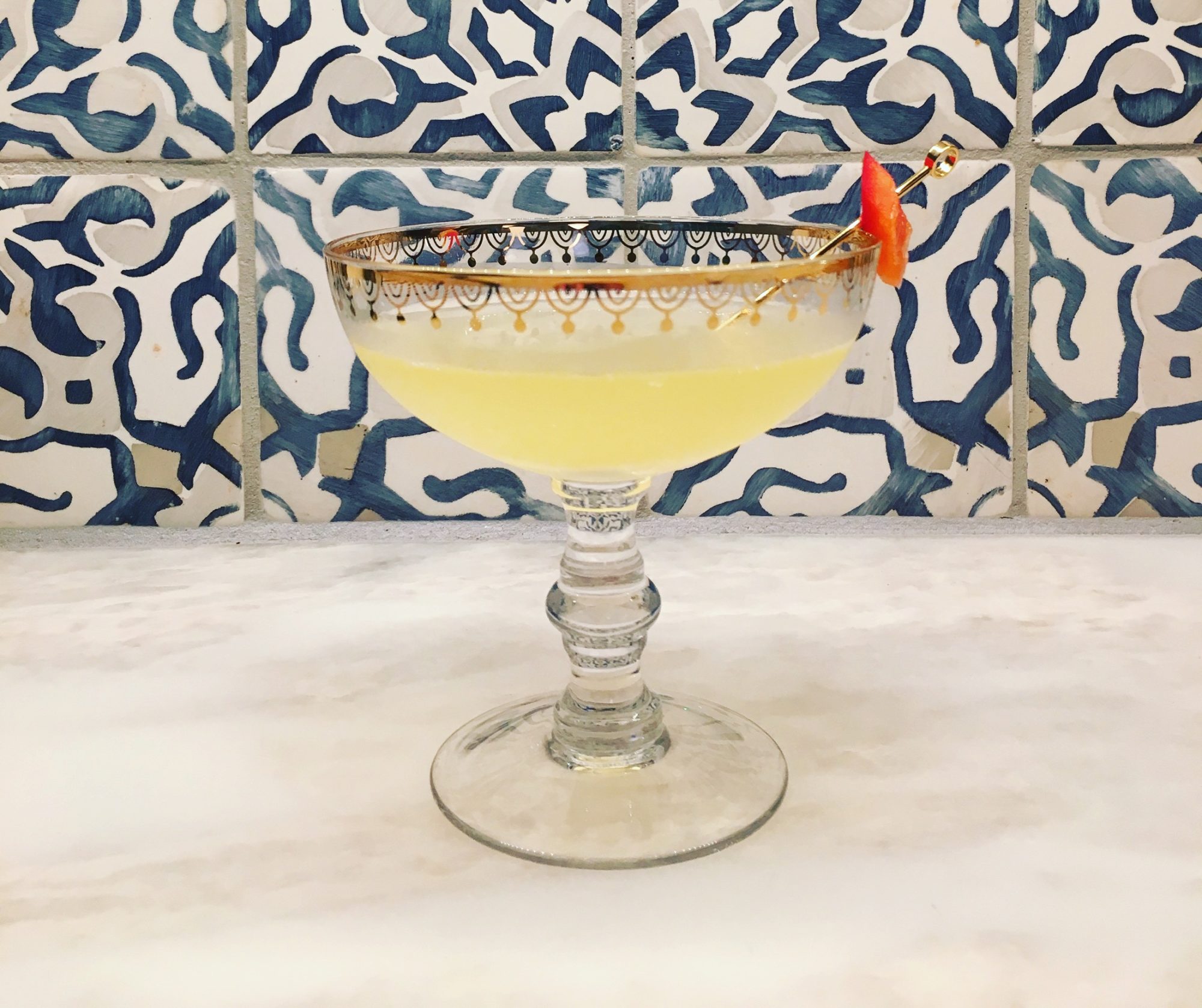The end of January brought us an unusual astronomical event: a super blue blood moon. It was a combination of three phenomena: a super moon, where the moon is closer to Earth and therefore brighter; a blue moon, meaning the second full moon in a month; and a blood moon, which denotes the reddish hue caused by a lunar eclipse. But Washington, D.C. was not optimally situated to view the “blood” portion of the event. To make up for that fact and to celebrate the occasion, I prepared a Blood Moon cocktail:

Like my last recipe for the Desert Orange, this recipe features blood orange, which is in peak season from January to March. But here it functions only as a garnish – a red citrus wheel that serves as my “blood moon” proxy. The drink itself relies on a sibling citrus – grapefruit juice. The spirits are Campari, which complements the citrus nicely, and Ancho Reyes Verde, which adds a little kick.
The result is a light and refreshing drink that would do well on any night, super blue blood moon or not. And by “light” I don’t mean just easy to drink. Although the Campari and Ancho Reyes Verde flavors are definitely detectable here, they together comprise only 1 1/2 ounces of the recipe. Grapefruit juice is the primary ingredient, and there is no high-proof spirit. That means the drink is lower proof and lower-calorie than your typical cocktail – call it about half strength on both scores. So make yourself a couple rounds!
Here is the recipe:
Blood Moon
Ingredients
- 1 oz. Campari
- 1/2 oz. Ancho Reyes Verde
- 2 oz. freshly squeezed grapefruit juice
- blood orange wheel
Instructions
- Combine Campari, Ancho Reyes Verde, and juice in a shaking tin with ice and shake vigorously.
- Strain into a rocks glass. Add a large ice cube.
- Garnish with blood orange wheel.
Enjoy!
Missing some ingredients? You might be able to have them delivered. Check out our comparative review of liquor delivery services.
















